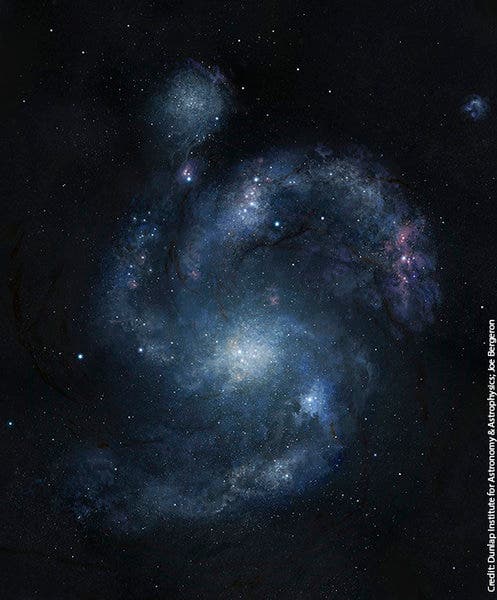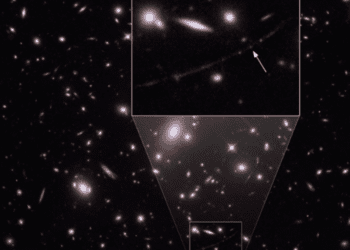
In a remarkable discovery, astronomers have found the oldest spiral galaxy to our knowledge – a three-armed spiral galaxy dating back nearly 11 billion years. It precedes any other previous record holder by about 2 billion years, basically sweeping away the competition. The spiral galaxy is so amazing that it caught astronomers completely by surprise, and even they couldn’t believe what they had stumbled upon at first.
“Our first thought was that we must have the wrong distance for the galaxy,” lead researcher David Law, with the University of Toronto, told Discovery News.
“Then we thought perhaps it was the human brain playing tricks on us. If you look at enough blobby, weird-looking galaxies sooner or later, like a Rorschach blob test, you start to pick out patterns whether or not they’re there,” Law said.
This wasn’t any illusion, any fabric of their imagination. Indeed, the spiral galaxy, dubbed Q2343-BX442 and located in the direction of the Pegasus constellation, had its structured imaged by the Hubble Space Telescope and was confirmed by the Keck II telescope in Hawaii, which studied the object’s internal motions. Studies of spectra from more than 3,600 locations in and around the galaxy revealed that it is, indeed, a rotating spiral galaxy.
The galaxy was present in the early universe, about 3 billion years after the Big Bang, at a time when galaxies were still forming and normally looked clumpy and irregular. “The vast majority of old galaxies look like train wrecks,” said UCLA astronomer Alice E. Shapley, one of the discoverers of the unusual spiral galaxy. “Our first thought was, why is this one so different, and so beautiful?”
Ancient galaxy has spiral days numbered
Ancient spiral galaxies are extremely rare. Actually out of a sample bundle of 306 Hubble Space Telescope imaged ancient galaxies, only ONE presented a spiral structure – the very object of discussion in this article, BX442. This very atypical placement of the spiral galaxy at such an early phase of the Universe is what sparked scientists to investigate it with great scrutiny. The team came to the conclusion that the galaxy’s shape is due to gravitational effects of a smaller galaxy in its vicinity. If that proves to be true, than BX442 wouldn’t had last as a spiral galaxy for too long.
Computer simulations show BX442, a relatively large galaxy with about the same mass as the Milky Way, would only last about 100 million years as a spiral structure.
“We think that we just happened to catch it at a very special time,” Shapley said. “I’d say by today, it probably doesn’t look like a spiral galaxy.”
Our own spiral galaxy, the Milky Way, belongs to a longer-lived class.
“One of the leading mechanisms that we believe explains modern day spirals, such as the Milky Way, is what is called ‘density wave theory,’ which doesn’t need any kind of nearby galaxy. It happens from the disk alone in isolation,” Law said.
The findings were reported in journal Nature.






